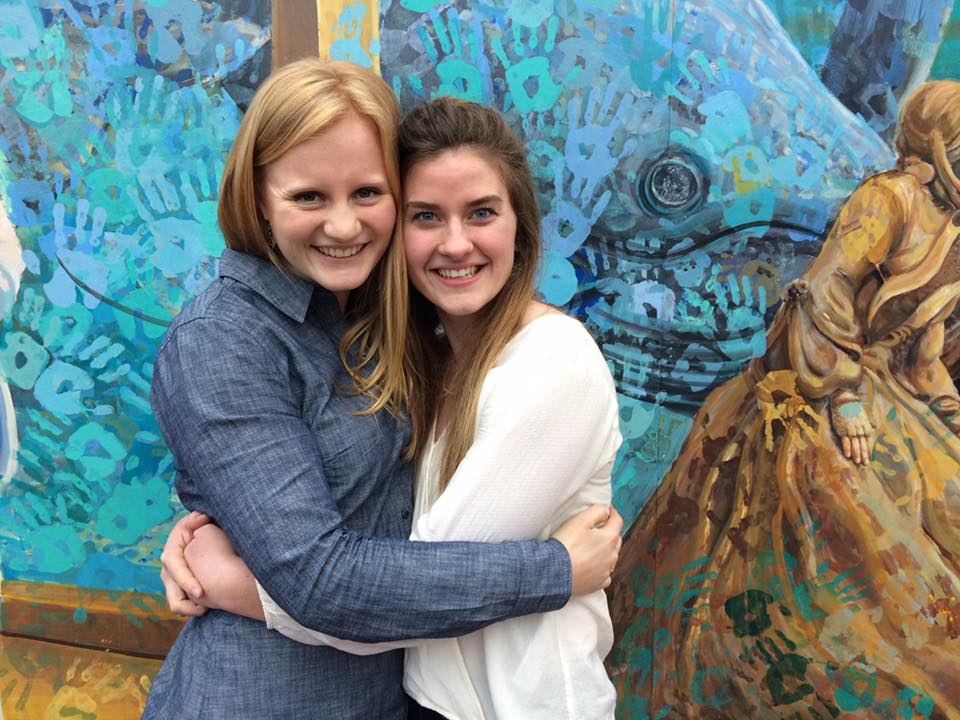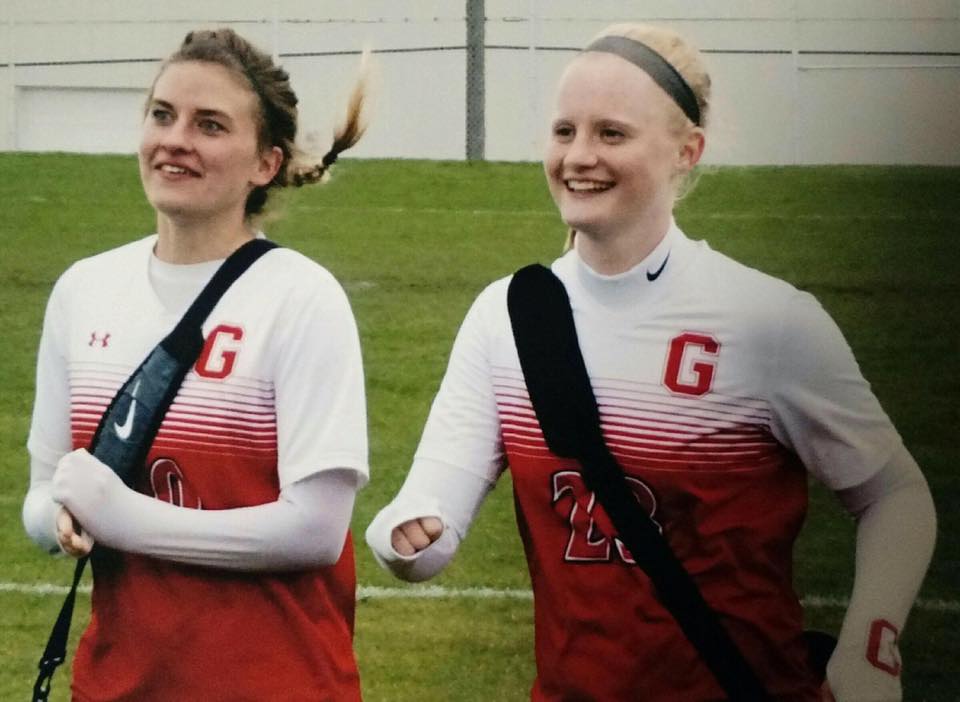Team Up India Part 2

Last summer GCC senior Lindsey Reichert traveled to India on a Red Box Missions scholarship. During her time overseas, Lindsey worked with the missions organization Harvest Bridge doing photojournalism and blogging. She had the opportunity to work in schools, serve local churches, and assist at medical clinics. To learn more about Lindsey’s time in India read the blog titled “Team Up India Part 1.”
Lindsey’s experience with India didn’t end when she stepped foot back on American soil. She allowed her time overseas and the lessons learned to drastically shape her senior year at Grove City in a unique way. Here’s how:
What impacted you most during your trip to India?
When people ask me what I loved most about India, it’s the people. A lot of my time was spent with the kids. My heart was broken for them when I saw that a lot of what was holding them back had to do with education.
When did you realize that this was a problem you could potentially fix?
Last fall I was taking a Social Entrepreneurship class and for one of our projects we had to participate in the elevator pitch competition on campus. This is when I realized I could integrate my experience over the summer with what I was learning in class. I knew I wanted to do something with India that addressed an aspect of their education.
What was your idea for the elevator pitch?
The pitch was basically for a sports program that would teach kids about good nutrition in India.
Why sports?
My very first idea was that I wanted to start a school. But there are already a lot of schools and successful Christian schools. So then I started to think about what the schools don’t have and what I can add to them. I was passionate about the education over there. I saw it as a great model for missions because the kids are there for 10 years and are hearing about the gospel. I was super passionate about the education system.
So then the question was, what can I add to the schools?
I thought back to Jaigaon (an area of India I spent time in) and the school we were in. When I was there, we asked the children what they love to do and all of the kids talked about sports. The original idea was to do a sports program for the school since they don’t have organized sports.
Why nutrition?
It goes back to the school. While we were at the schools in India, we were teaching about American culture, leading songs, and sometimes we would give a Bible message. One day we were asked to teach a health class. We gathered the girls in 7th to 10th grade and taught them a class on basic health and nutrition. A lot of these girls came from poor families and they didn’t know anything about health and nutrition. The class was about an hour long. Our time teaching was eye opening. The girls were asking questions about things that we take for granted, such as how many fruits and vegetable to eat in a day.
Their diets are high in carbs. They eat a lot of chicken, everything has curry and there are a lot of vegetables. But what I observed first hand and what I have been finding in my own research is that the kids have poor eating habits. They are eating a lot of rice and noodles and their snacks in school consist of chips, cookies and juices. Even when their teachers would encourage them to bring in fruit and water, the kids would decide to do otherwise.
Aren’t many of their eating habits cultural?
We are focused not just on changing the food they eat but on teaching them the “why” behind it. Yes, it is a cultural thing, but the kids need to know why they should change their habits. This is where the sports come in. A sports program will show the kids how what they eat affects their bodies. We’ll help them to see what they can add to their diet so they can get the nutrients that they are lacking.
How exactly will sports play into teaching them good nutrition?
We needed to find something that would get kids excited about eating healthy and motivate them to change. When it comes to sports, you have to eat better to perform better. That’s how I got interested in nutrition. For me, it started with sports. I wanted to perform better so I started eating healthy.
This program will give them the head knowledge and help them to see physical effects as well.
What did it look like getting into Venture Lab?
I competed in the elevator pitch competition and made it to the top 10. I couldn’t go to the top 10 round because of a scheduling conflict but I kept wondering what would have happened if I had done it.
I emailed Dr. English and gave her my idea asking her where to go from there. She told me about the Venture Lab info meeting. I went to the meeting and talked to her about it afterward. She was excited.
The next step was the application for Venture Lab. I went to Dr. Mech and he suggested looking for other team members. Kelsey Patton knew about the project because we had talked about it as friends. She told me she was interested so we collaborated and sent in the application.
Over Christmas break we found out that we were accepted into Venture Lab.
What is Venture Lab and how will it help you make this a reality?
Venture Lab is an idea incubator that is run through the Center for Entrepreneurship. Teams come together and propose an idea for a business. The idea goes to a board of professors. They review the idea and decide who they will fund and invest money into. They pretty much tell you if this is a viable idea or not. If you’re accepted, it’s a semester long project that you can take for credit. At the beginning, you get assigned a professor who acts as your advisor for the project. You work with the advisor during the semester to see if this is a viable business option. You are basically testing assumptions and working toward a “green light.”
Venture Lab provides you with a variety of resources to help with your endeavor. This semester they are bringing in speakers every few weeks to talk about specific topics within the business plan process. One week it was about branding.
We are also in partnership with a design class. We are working with a student who will help us with branding, logo design, social media, etc.
Lastly, you are paired with an advisor (our advisor is Dr. Mech) who is able to connect you with other entrepreneurs, some of which are alumni.
What’s the name of your project?
Team Up India.
Where are you right now? What have you completed?
Right now we are fundraising.
We are working on an extensive grant proposal to a pharmaceutical company. Dr. Howley works very closely with them. They have locations in India and they sell healthcare products. Although we won’t be selling their products, we believe our mission can align with and support their mission. In addition, we have been approaching rotaries with grant proposal and seeking support from local churches.
We have also established support for our program in India. We are in contact with the principal of a school in West Bengal. He wants us to start the program in his school. There are four teachers there who want to see this project happen.
We are in the process of developing the program. We have been working with expert coaches and sports program professionals to develop a sports program. In addition, we have been working with a graduate student who is pursuing nutrition to develop a health class curriculum.
Our online presence has also been coming along. We recently started working with social media as well as a blog and website.
What is your timeline moving forward?
We are looking to be fully funded by the end of the semester. Our hope is to pilot the project for five weeks in India this summer. The results will allow us to create a turnkey system or a packaged product that we can turn over to other schools in the future. At this point, our hope is go over to India June 10 to July 15. We will be there at the start of their school year.
Our program would take place five days a week. It would be an hour of in-class learning. During this time we would teach about health and nutrition using presentations, power points, handouts and quizzes.
Then we would move outside, for a one-hour training session. The training session would start with a warm up and transition game, then the main focus for the day and end with a discussion about what the kids learned and how this connects with what they learned in the classroom.

Any last words?
We’re very excited about it. This journey has definitely been about us following God. He keeps making it evident that he is opening doors that have allowed for opportunities. It’s about trusting Him. His hand is clearly on the project as we take it one step at a time.